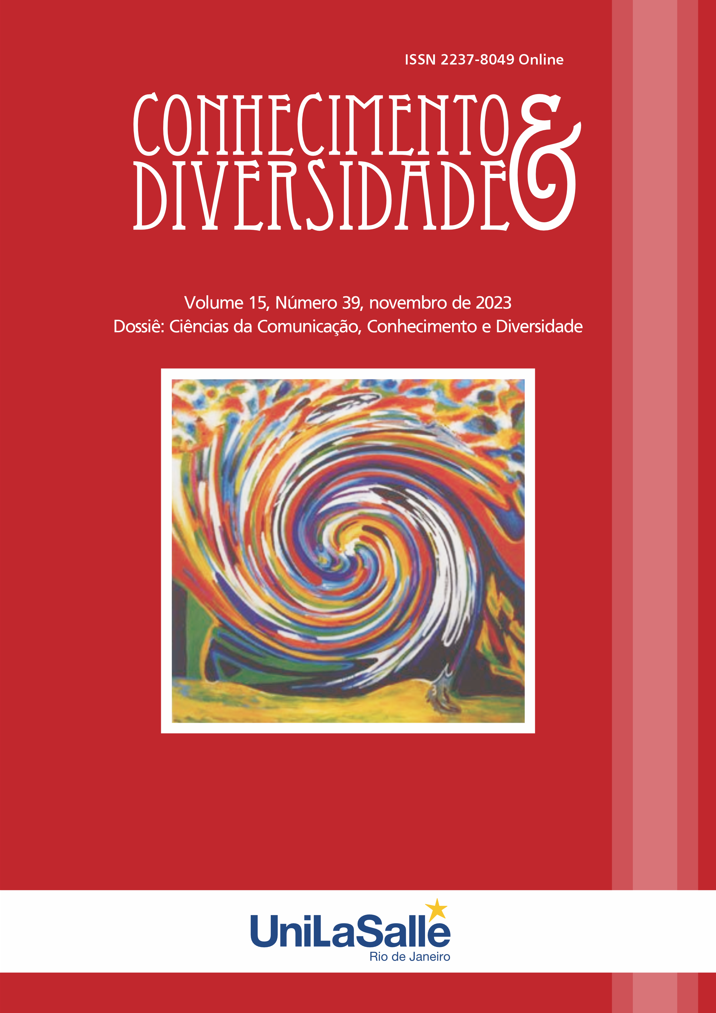THE ISLAMIC-ANDALUSIAN INFLUENCE ON THE CONSTRUCTION OF FLAMENCO AS A MUSICAL GENRE
A MEDITERRANEAN CULTURAL PERSPECTIVE
DOI:
https://doi.org/10.18316/rcd.v15i39.11169Keywords:
Mediterranean culture, Islam, Flamenco, Al-Andalus, Music, DanceAbstract
Flamenco is considered the musical style that most identifies the Spanish people. It emerged as a result of the cultural mixing that occurred when Muslims, Jews, Gypsies, and Christians coexisted for centuries in Al-Andalus, giving rise to the musical style we now know as flamenco. This research aims to detect the presence of Islamic culture in flamenco music from the perspective of Mediterranean culture. A predominantly qualitative methodology has been used, and a systematic literature review has been conducted, employing the PRISMA methodology. Among the results, we find numerous popular lyrics in the flamenco genre that refer to the Islamic people and recount their historical memory. The musical intonations of flamenco carry an oriental tone in their music and share melodies similar to expressions of the Muslim people. Ancient paintings have allowed us to find similarities between the body posture of a belly dancer and a flamenco dancer. We conclude by affirming that Islamic influences are particularly relevant in the origin and subsequent consolidation of flamenco as a musical genre.
References
Alexander, PA (2020). Methodological guidance paper: the art and science of quality systematic reviews. Review of Educational Research, 90(1), 6-23. https://doi.org/10.3102/0034654319854352
Álvarez Cabellero, A (1988). Gitanos, payos y flamencos, en los orígenes del Flamenco. Cinterco.
Azara, P. (1927). ¿Culturas Mediterráneas? DC PAPERS, revista de crítica y teoría de la arquitectura, 9-10, 105-109.
Blacking, J. (1973). How Musical is Man? University of Washington Press.
Castro, A. (1983). España en su historia. Crítica.
Conversi, D. & Machin-Autenrieth, M. (2020). The Musical Bridge-Intercultural Regionalism and the Immigration Challenge in Contemporary Andalusia. Genealogy, 4(1), 5, 1-19, https://www.mdpi.com/2313-5778/4/1/5
Cooper, H. (2010). Research synthesis and meta-analysis: A step-by-step approach. Sage.
Cruces, C. (2012). Hacia una revisión del concepto “nuevo flamenco”. La intelectualización del arte. En J. M. Díaz Báñez, F. J. Escobar Borrego e I. Ventura Molina (Eds.), Las fronteras entre los géneros: Flamencos y otras músicas de tradición oral (pp. 13-26) http://congreso.us.es/infla/infla2012/documents/Book-INFLA_FMA.pdf
Dirkx, AJ (2021). Flamenco Identity. REIDOCREA, 10(21) 1-9.
Estébanez Calderón, S. (1960) Escenas andaluzas. Espasa Calpe.
Fabi, F. (1861-1906). El Velo Azul [Obra de arte]. Galleria dÀrte Moderno da Roma.
Fabi, F. (1861-1906). La Danza [Obra de arte]. Galleria dÀrte Moderno da Roma.
Godoy, S. J. (2016). La diversidad cultural del Mediterráneo Antiguo a través del cómic de carácter histórico. Boletín Millares Carlo, 32, 247-267.
Henares, N. (2020) The petenera and the flamenco time machine: a lens into the invisible immigrants of hawaii's sugar plantations. Musica oral del Sur, 17, 417-428. https://dialnet.unirioja.es/servlet/articulo?codigo=8099656
Hurton, B, Catalá López, F. and Moher, D. (2016). The PRISMA statement extension for systematic reviews incorporating network meta-analyses: PRISMA-NMA. Med Clin, 147:262–266., from https://www.elsevier.es/en-revista-medicina-clinica-english-edition--462-articulo-the-prisma-statement-extension-for-S2387020616306015
Idari Al-Marrakusi, I. (1860). Historias de Al-Andalus. En Biblioteca Virtual de Andalucía, Recuperado 26 mayo, 2023, http://www.bibliotecavirtualdeandalucia.es/catalogo/es/consulta/registro.do?id=100016
Karl, B. (2015). A través de una división: Cosmopolitanismo, género y cruce entre músicos marroquíes inmigrantes en la Andalucía contemporánea, Estudios de Migración, 3(1), 111-130, https://doi.org/10.1093/migration/mnu037
La Fuente y Alcantara, E. (1865). Cancionero popular. Colección escogida de segudillas y coplas. En Biblioteca digital Junta de Castilla y León. Recuperado 4 junio de 2023 https://bibliotecadigital.jcyl.es/es/consulta/registro.do?id=17012
Leblon, B. (1995). Flamenco. Hommes et Migrations, 1193. www.persee.fr/doc/homig_1142-852x_1995_num_1193_1_6148_t1_0058_0000_4
Machin-Autenrieth, M. (2021). Ziryab and Us: Tradition and Collaboration in the Interpretation of an Arab-Andalusian Musical Myth. Journal os intercultural studies, 42(4), 494-514. 10.1080/07256868.2021.1939273
Martos, E. (2008). La zambra en Al-Ándalus y su proyección histórica. Espiral. Cuadernos del profesorado, 1(2), 1-6. https://dialnet.unirioja.es/servlet/articulo?codigo=2661202
Moher, D., Liberati, A., Tetzlaff, J. & Altman, D.G., (2009). Preferred reporting elements for systematic reviews and meta-analyses: the PRISMA statement. PLoS Med 6(7): https://doi.org/10.1371/journal.pmed.1000097
Molano, O. L. (2007). Identidad cultural un concepto que evoluciona. Opera, 7, 69 - 84. https://dialnet.unirioja.es/servlet/articulo?codigo=4020258
Moreno, I. y Delgado, M. (2013). Andalucía: una cultura y una economía para la vida. Atrapasueños.
Muñoz-Fernández, G. A., Heredia-Carroza, J., de Sancha-Navarro, J. M. & García-García, L. (2023). Does the flamenco tourist exist? Motivation and segmentation. HELIYON, 9(3), 1-10. 10.1016/j.heliyon.2023.e14134
Oberlander, B. S. (2017). Deep Encounters: the Practice and Politics of Flamenco-Arab Fusion in Andalusia. [Tesis Doctoral Northwetern University] Web of Science.
Plata, J., de la. (1995). Noticias de esclavos, moriscos y gitanos (Jerez, siglos XV y XVI). En J. L. Navarro M. y Ropero (Eds.), Historia del Flamenco.(pp. 185-195) Tartessos.
Ramírez, J. R. (2006). Música y sociedad: la preferencia musical como base de la identidad social. Sociología, 60, 243-270.
Rodríguez, A. M. (2021). Arqueología de lo jondo. Almuzara.
Sorolla, J. (1914). Bailaora flamenca [Obra de arte]. Museo Sorolla de Madrid.
Sorolla, J. (1914). Bailaoras de Sevilla [Obra de arte]. Museo Sorolla de Madrid.
Tajfel, H (1981). Human groups and social categories. British Journal of Social Psychology, 21, 189-201. https://doi.org/10.1111/j.2044-8309.1982.tb00540.x
Zakaria, M. (2020). Critical study on the investigations regarding the moriscos and their legacy: from the founding school to the nationalist current. SciELO Preprints. https://doi.org/10.1590/SciELOPreprints.1125
Downloads
Published
Issue
Section
License
Copyright (c) 2023 Vicente Llorent-Bedmar , Macarena Cortés-Vázquez

This work is licensed under a Creative Commons Attribution 4.0 International License.
As recommended by the Public Knowledge Project, RCD adopts for its articles a CREATIVE COMMONS Attribution CC BY 4.0 license.
This license allows others to distribute, remix, adapt and build upon your work, even commercially, as long as they credit you for the original creation.
This is the most appropriate license offered.
Recommended for maximum dissemination and use of licensed materials.



